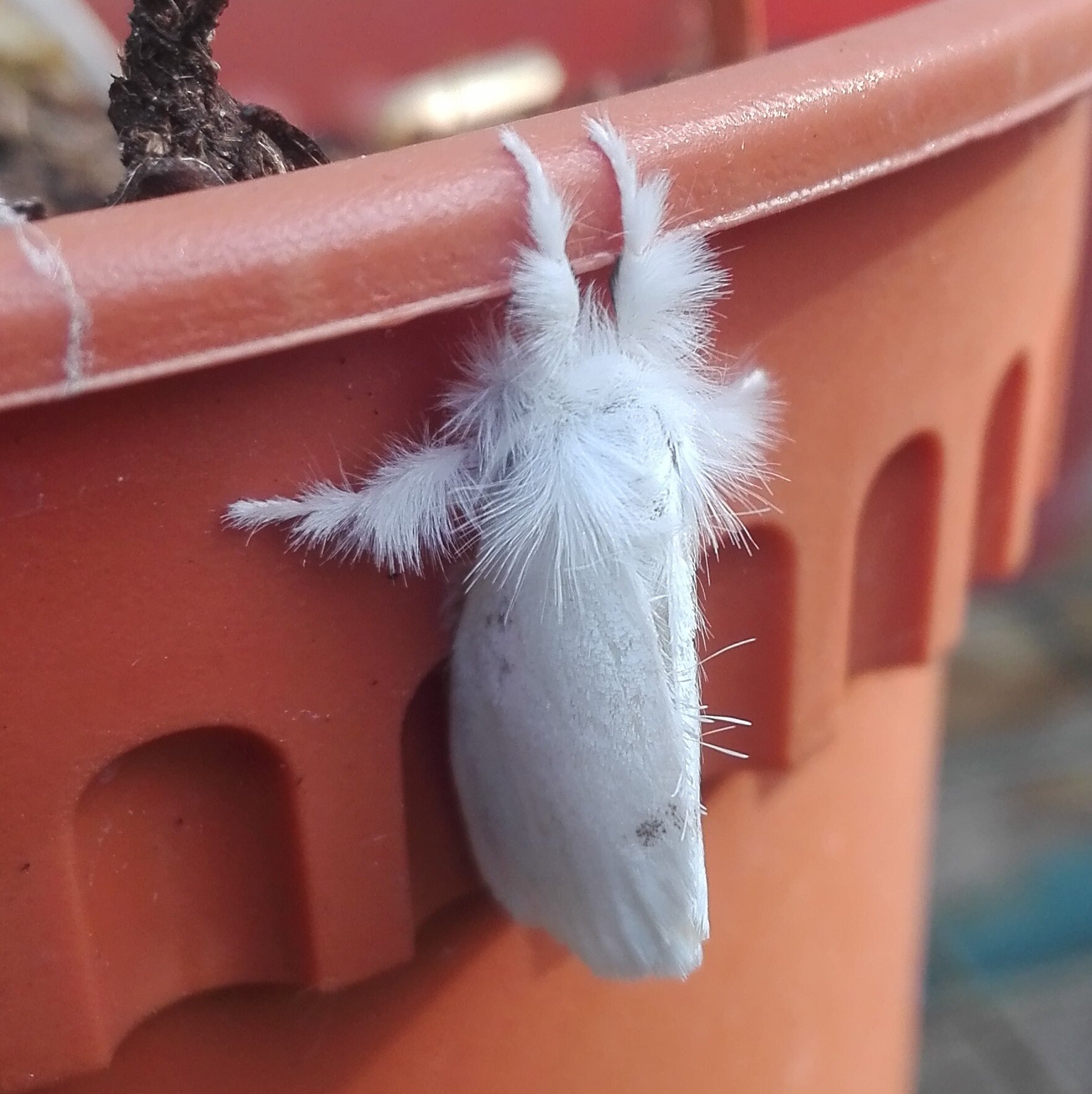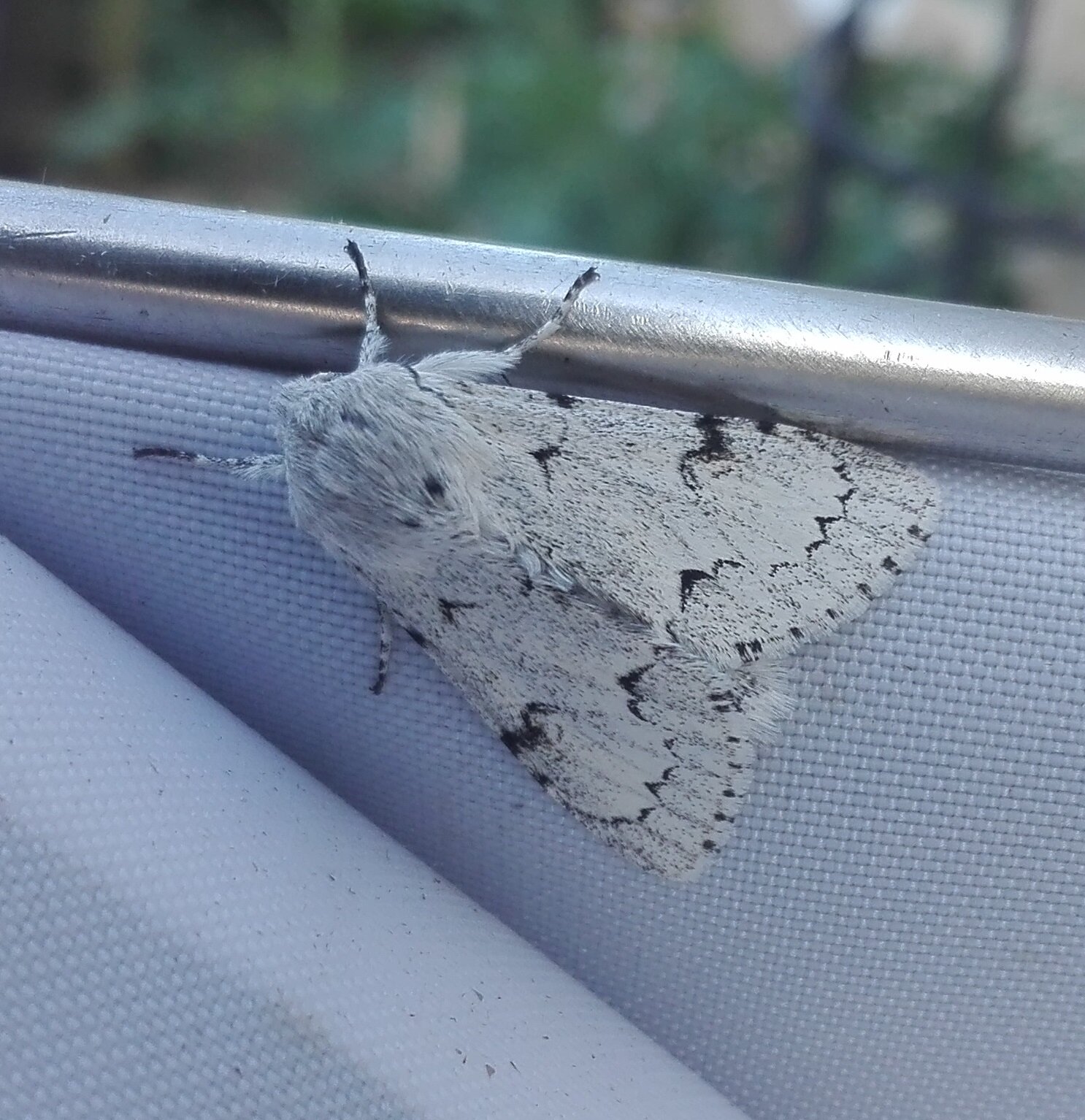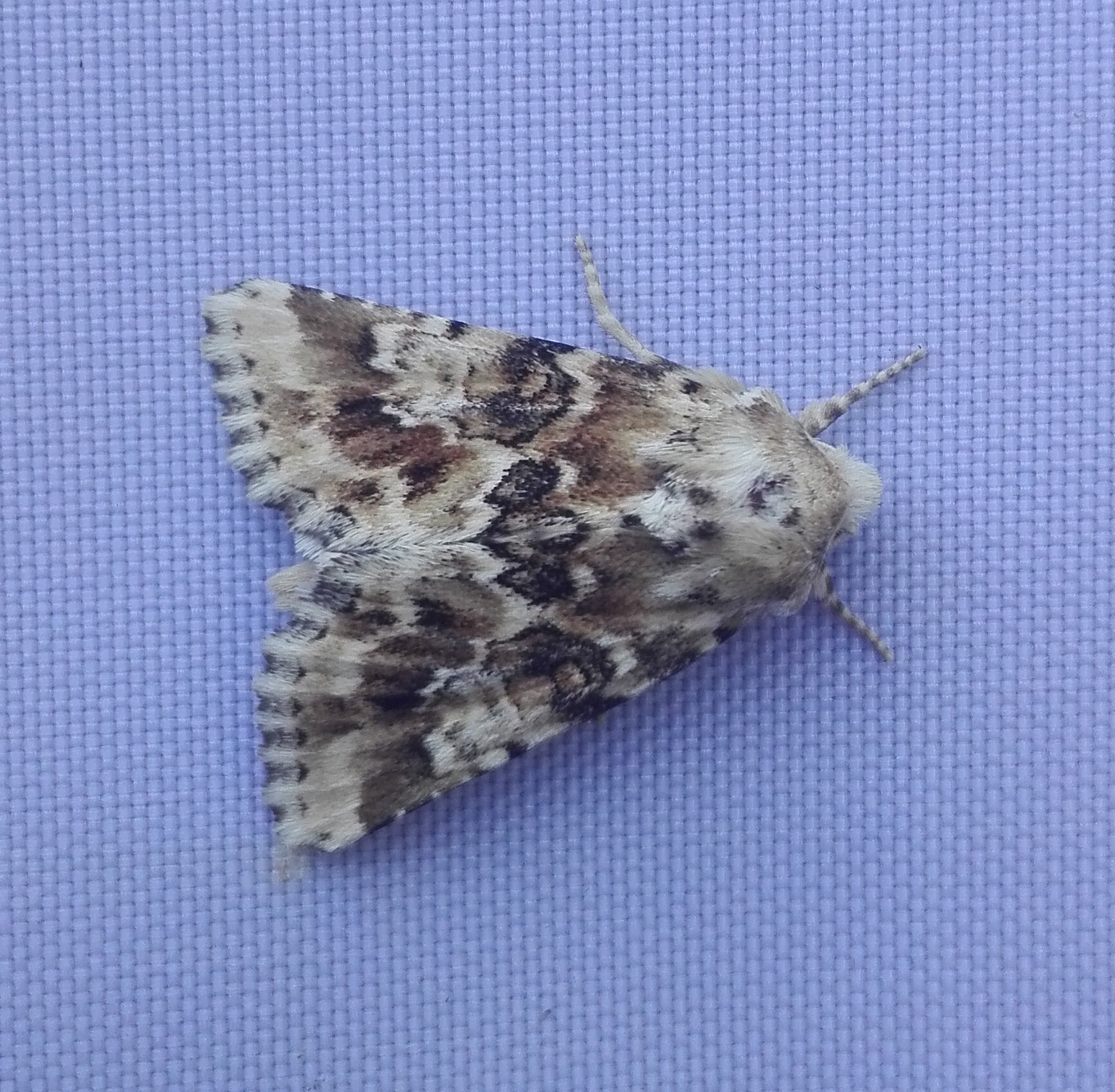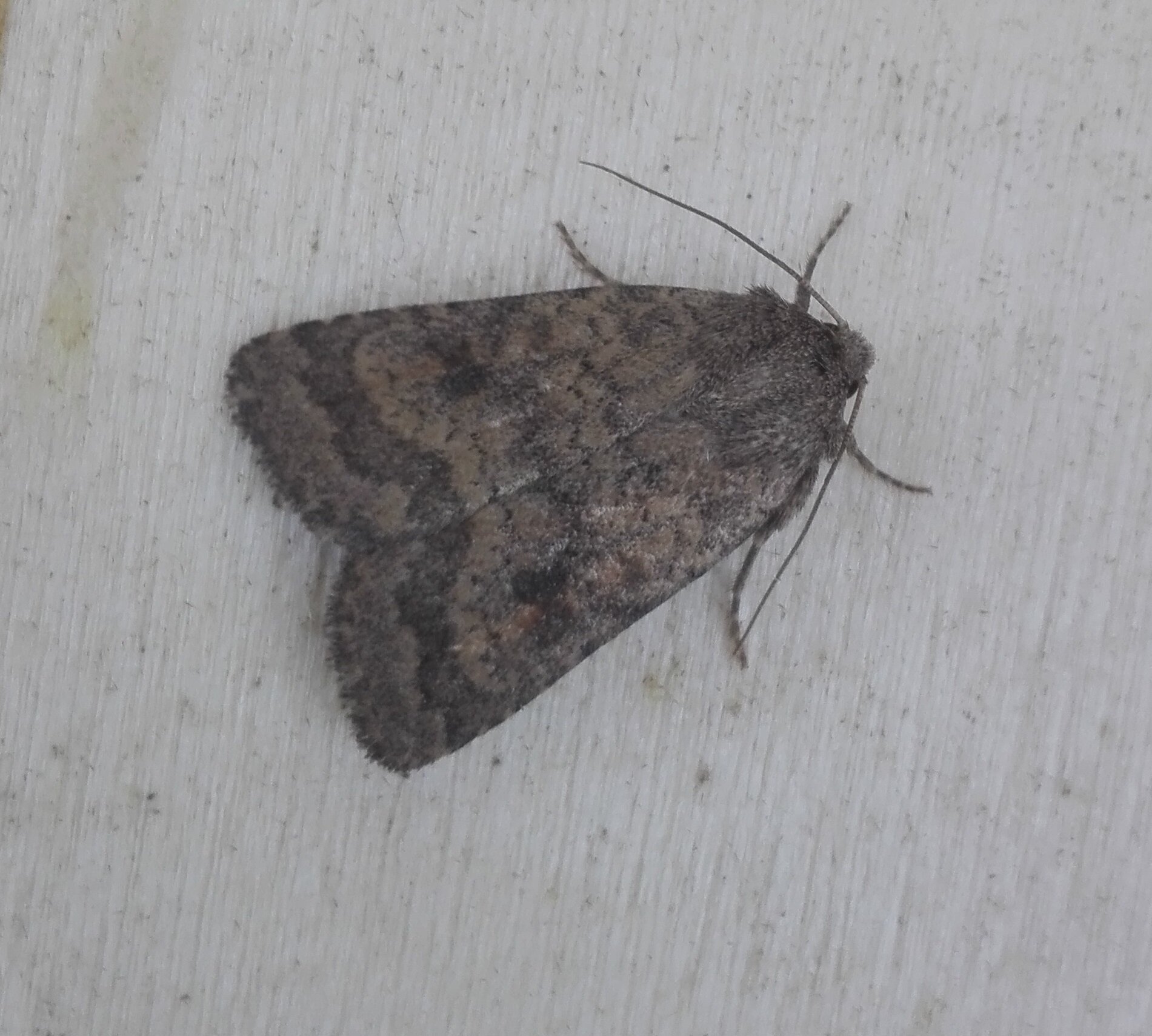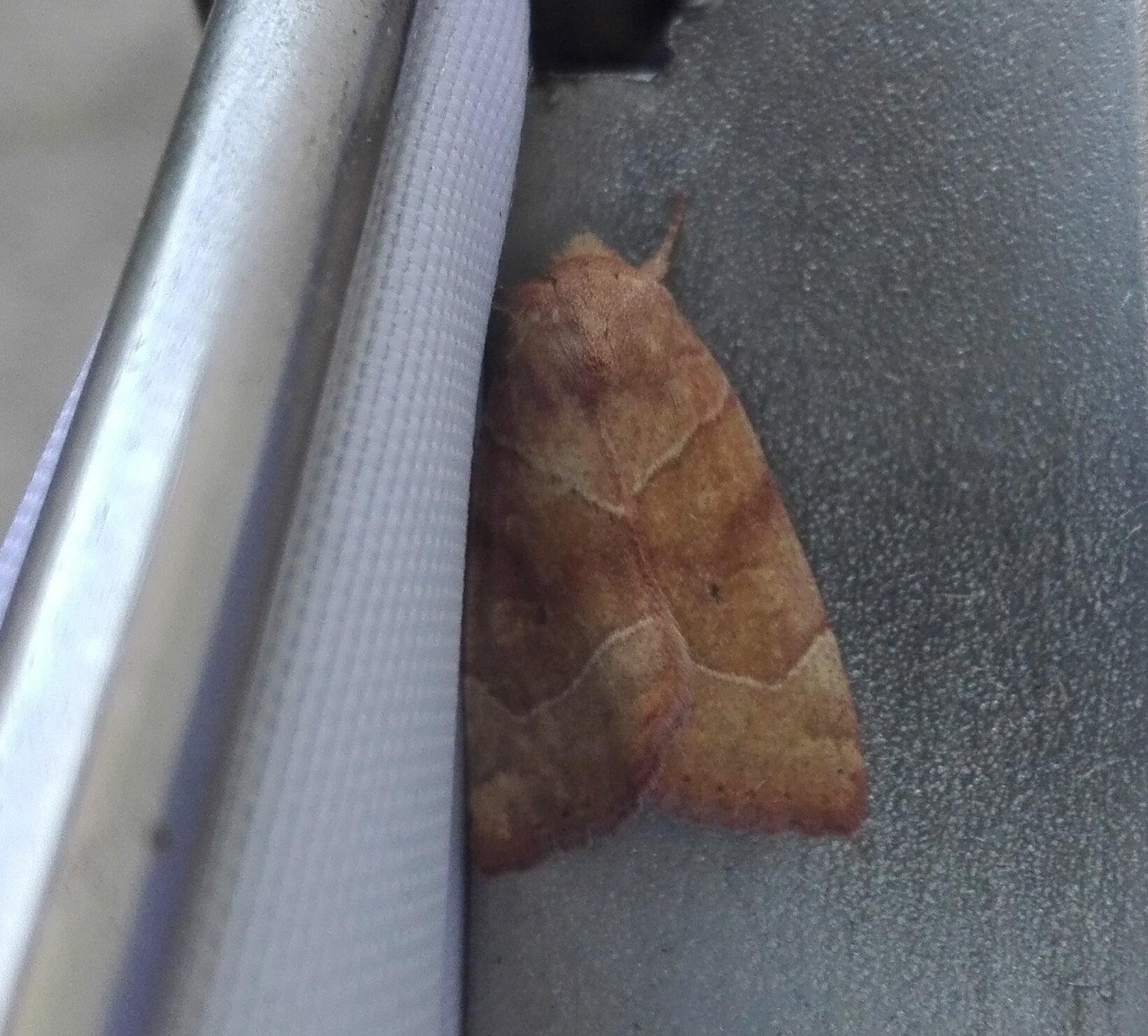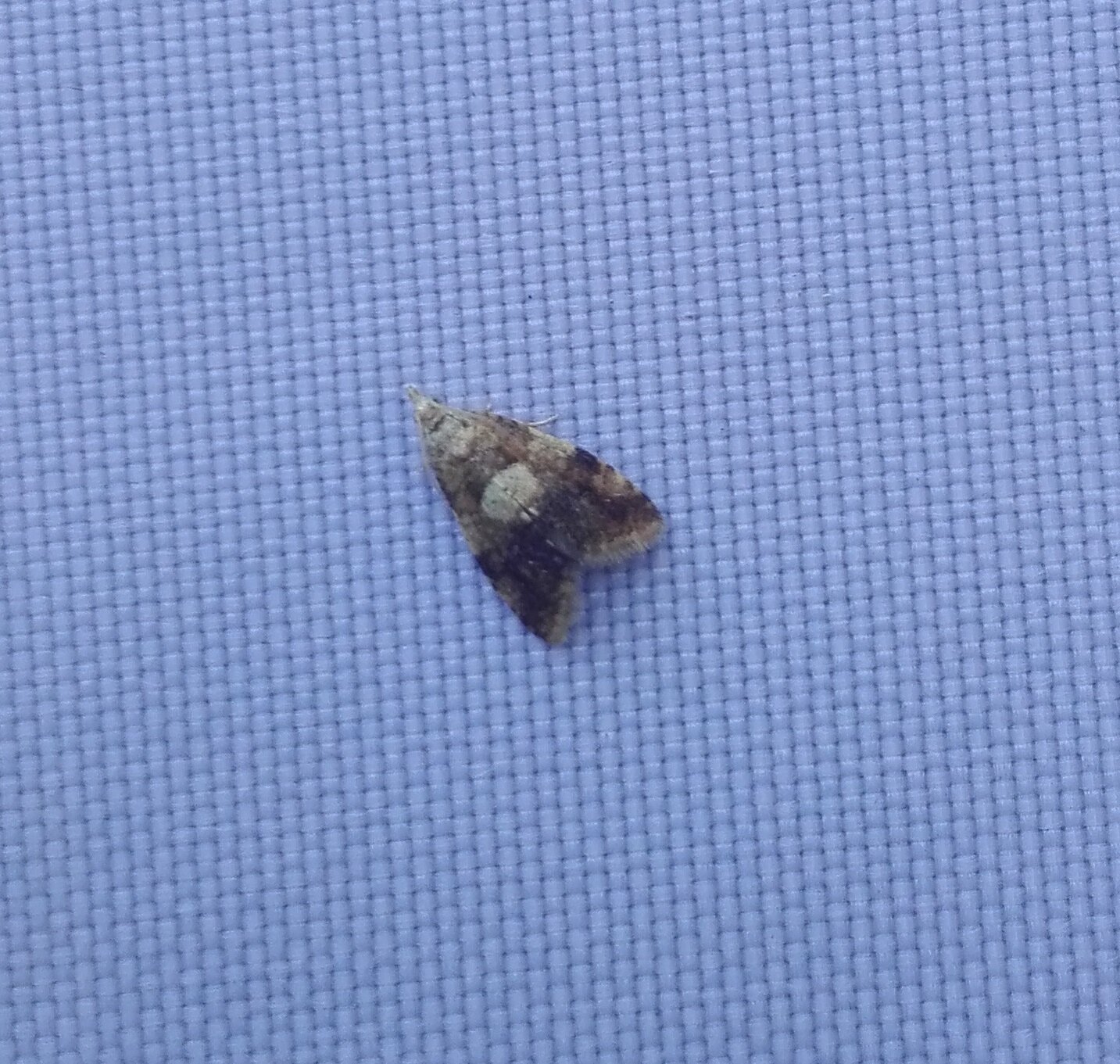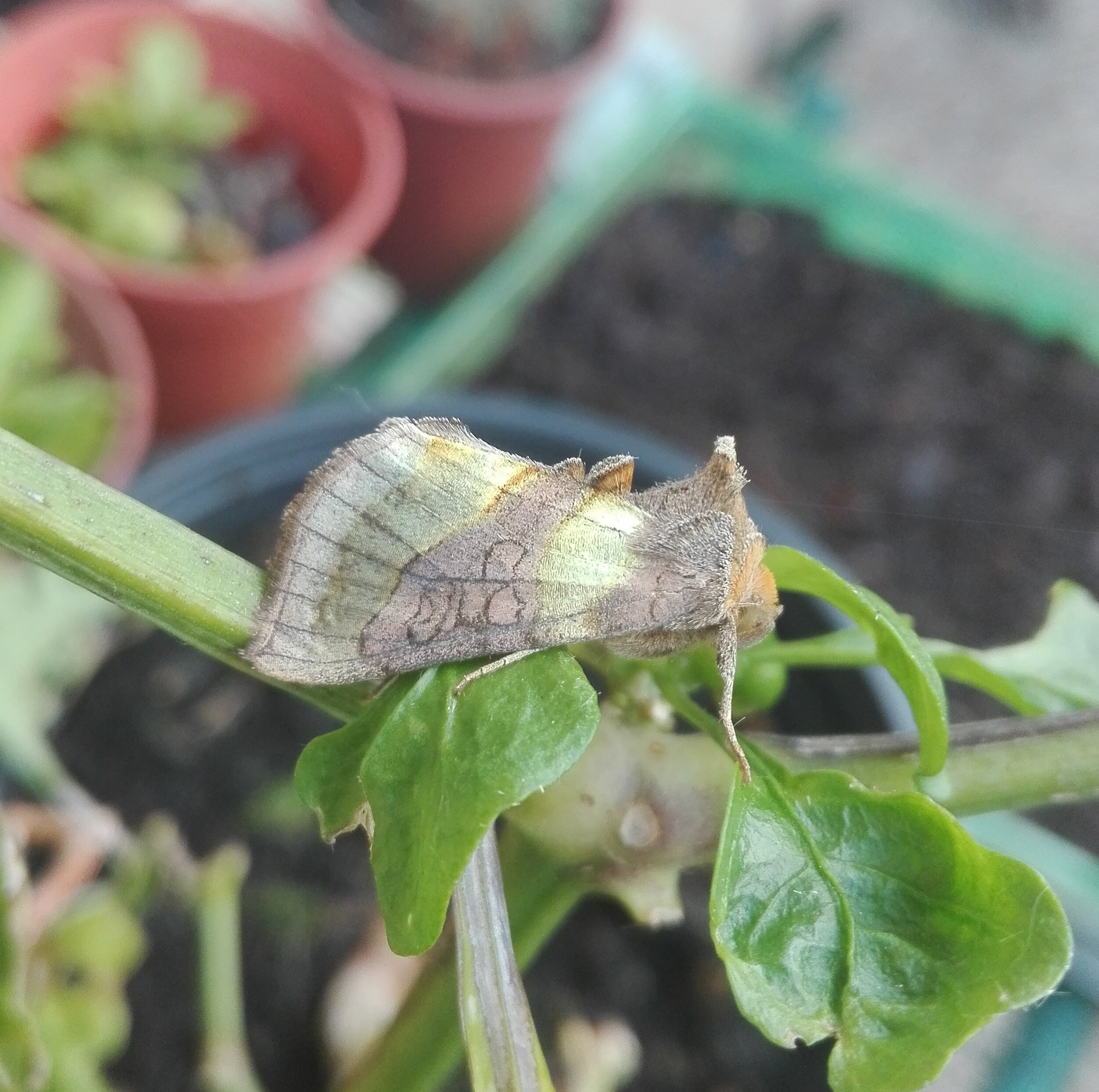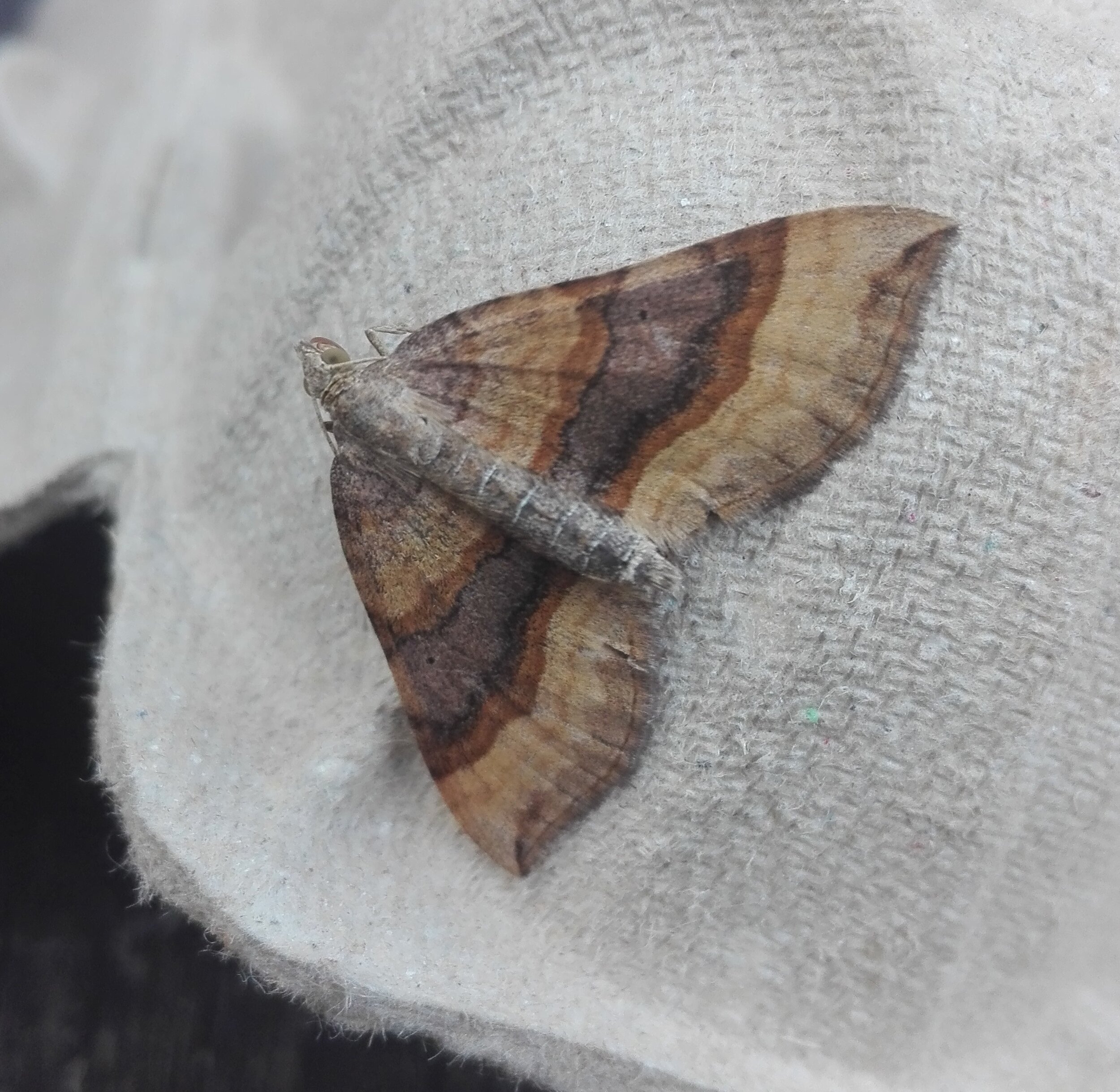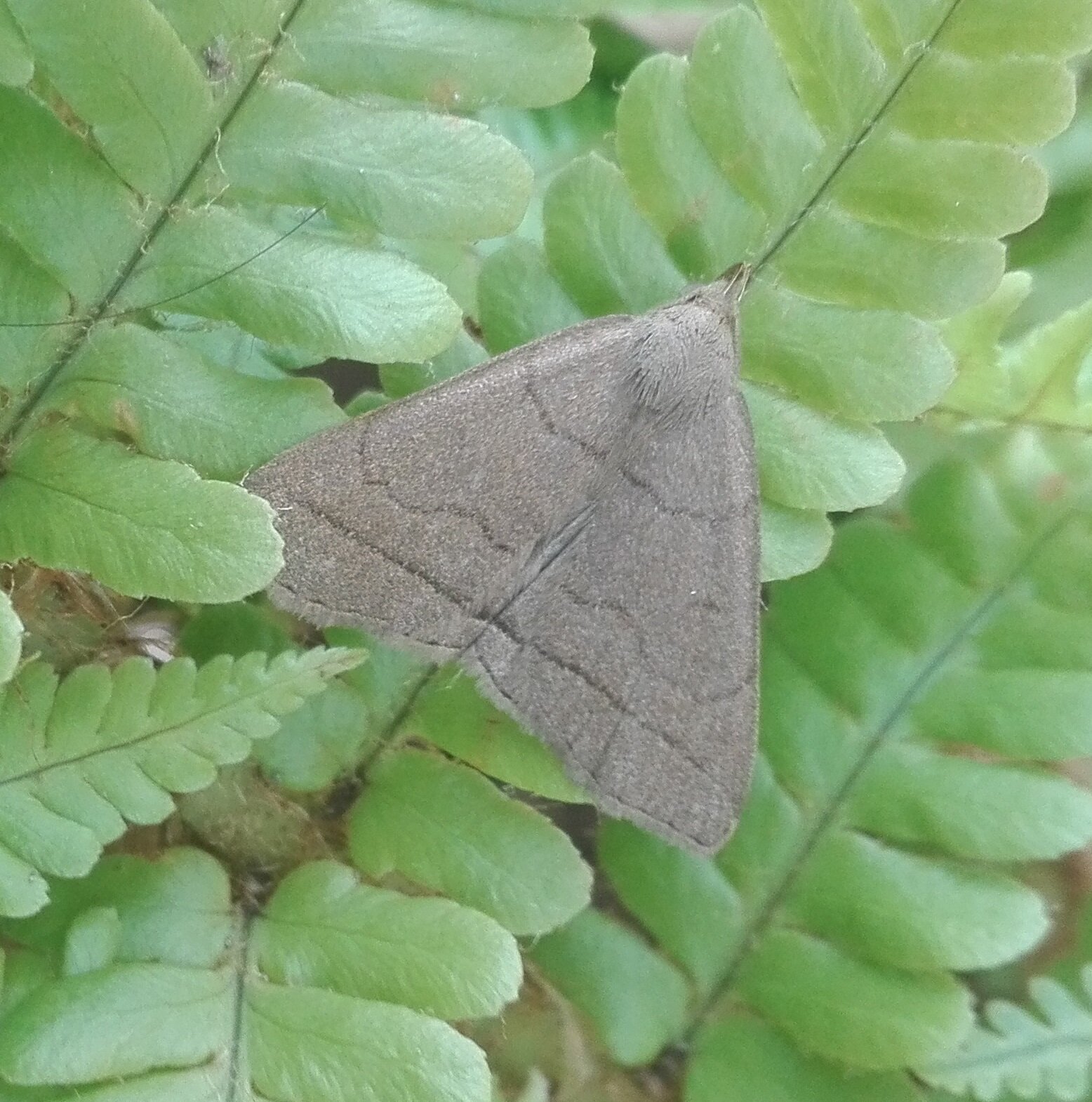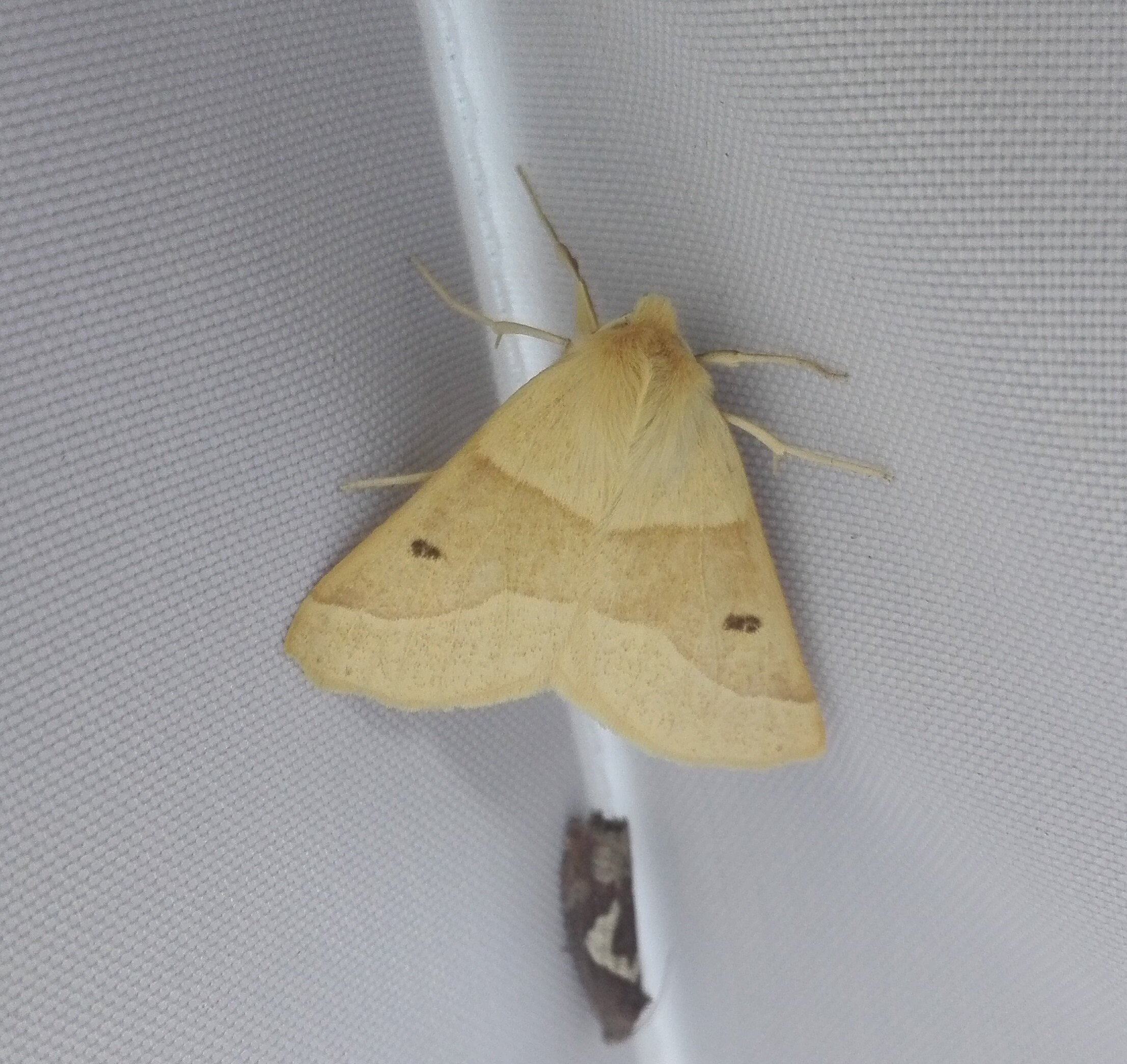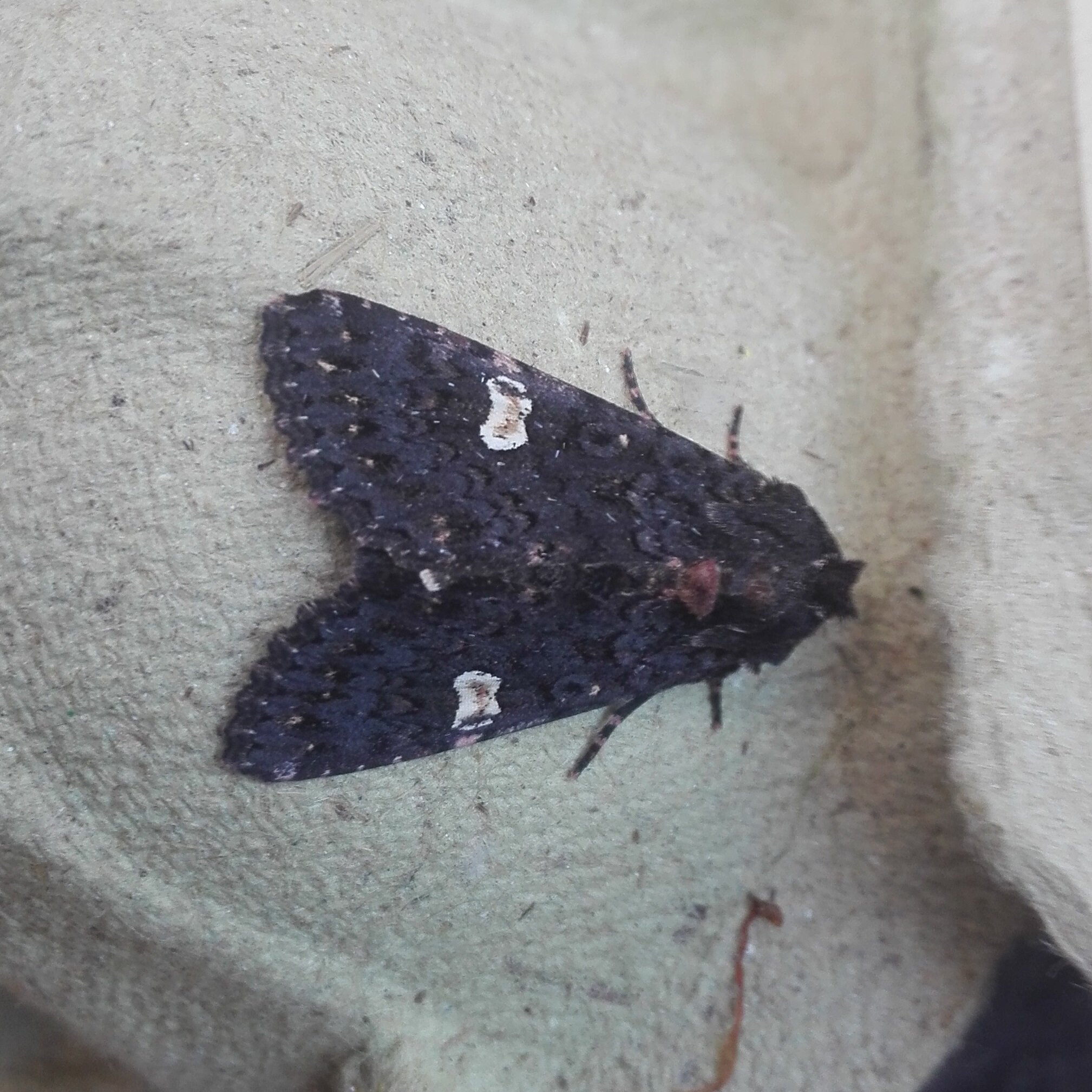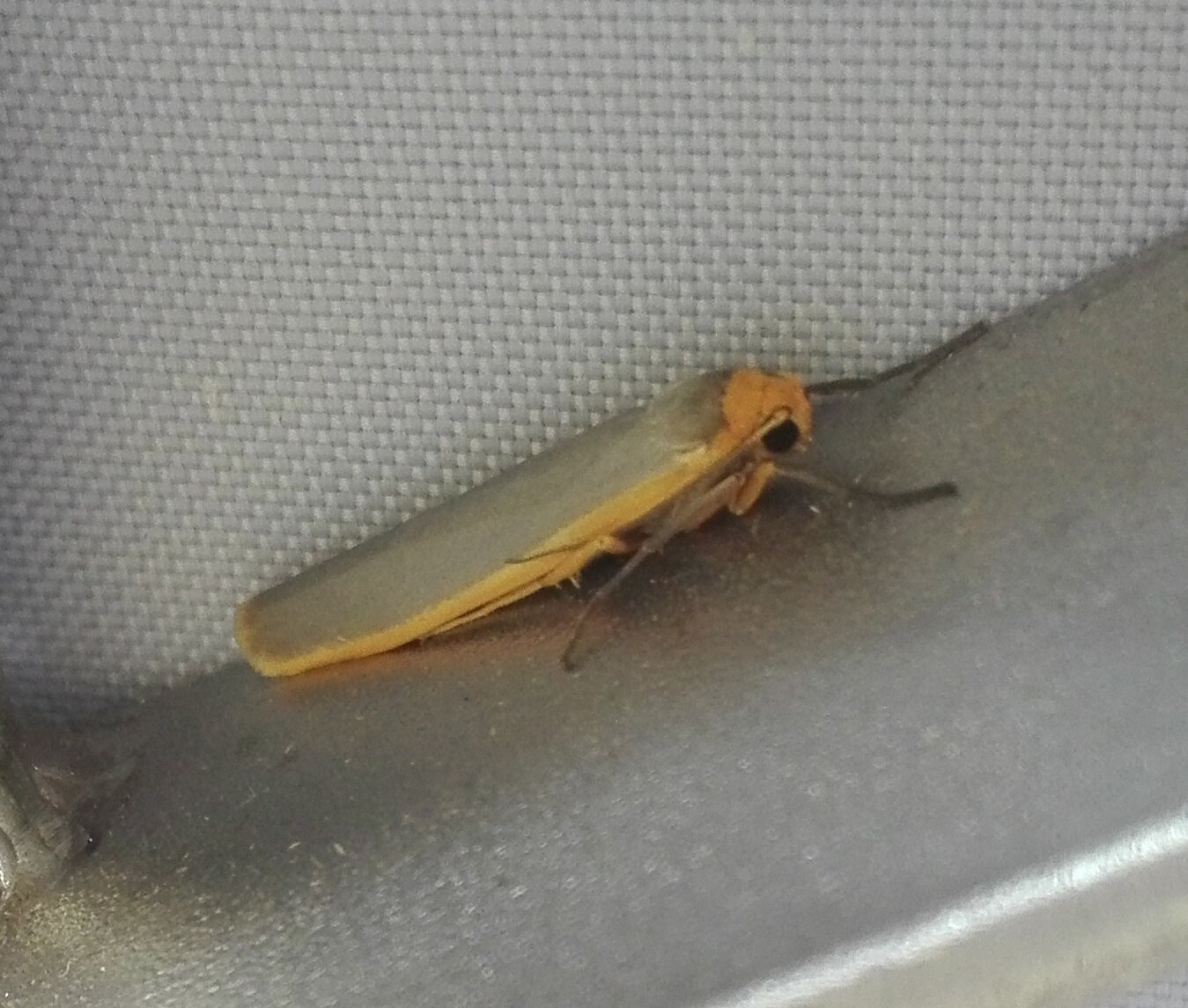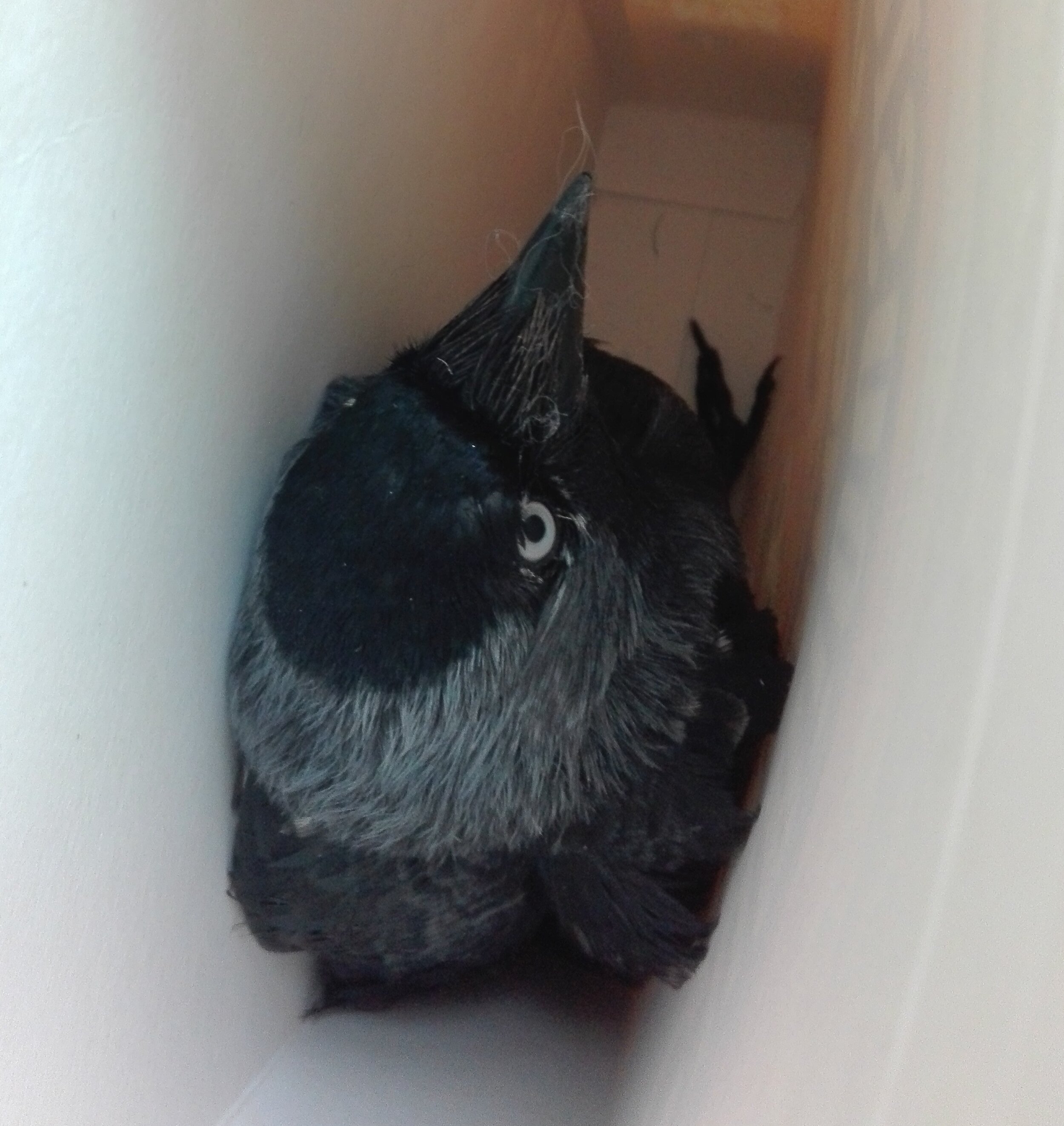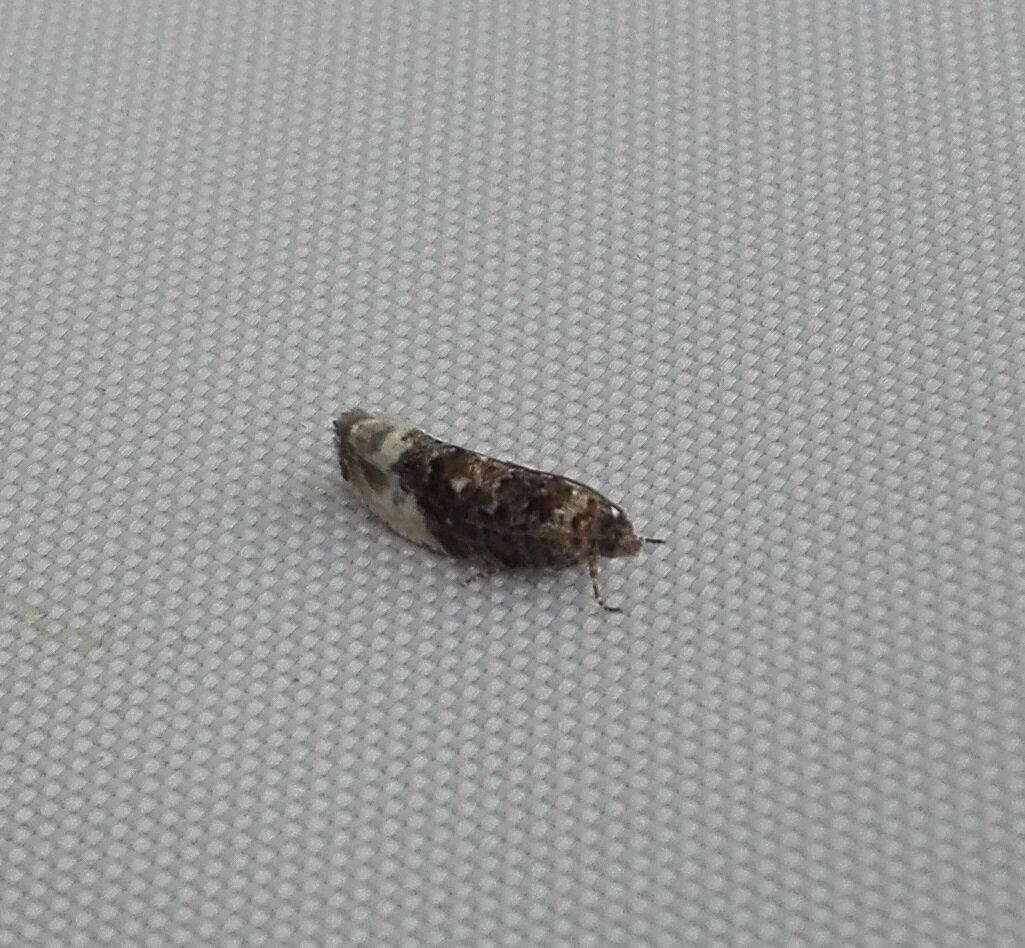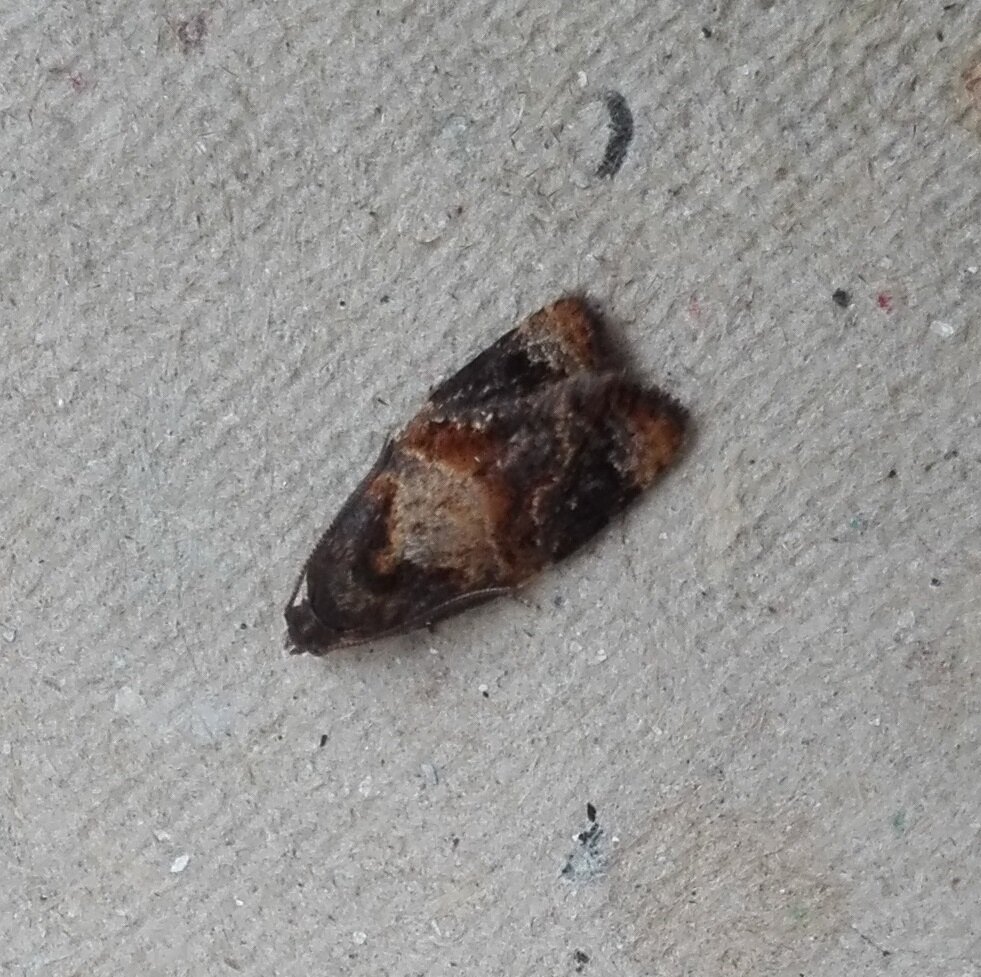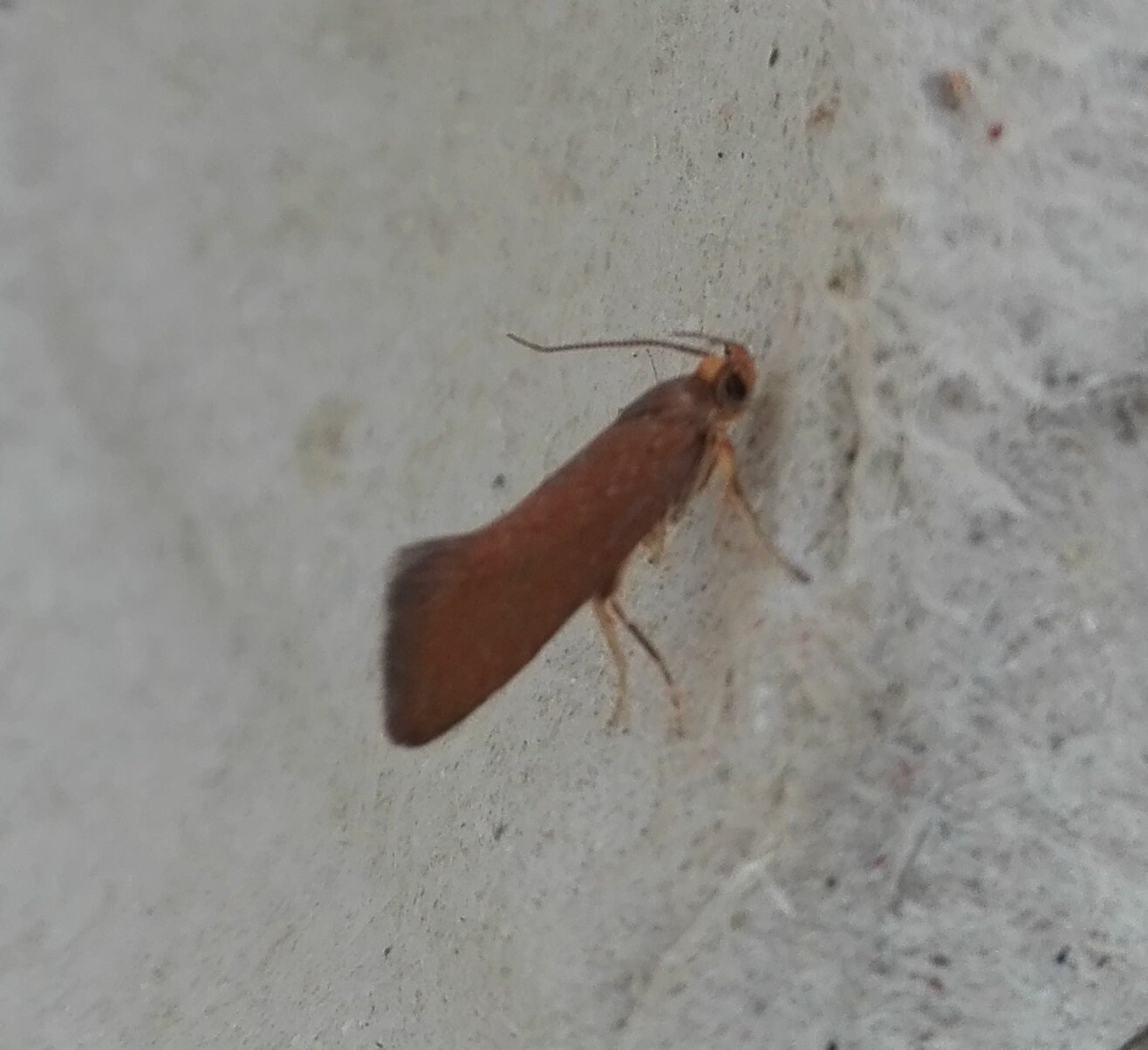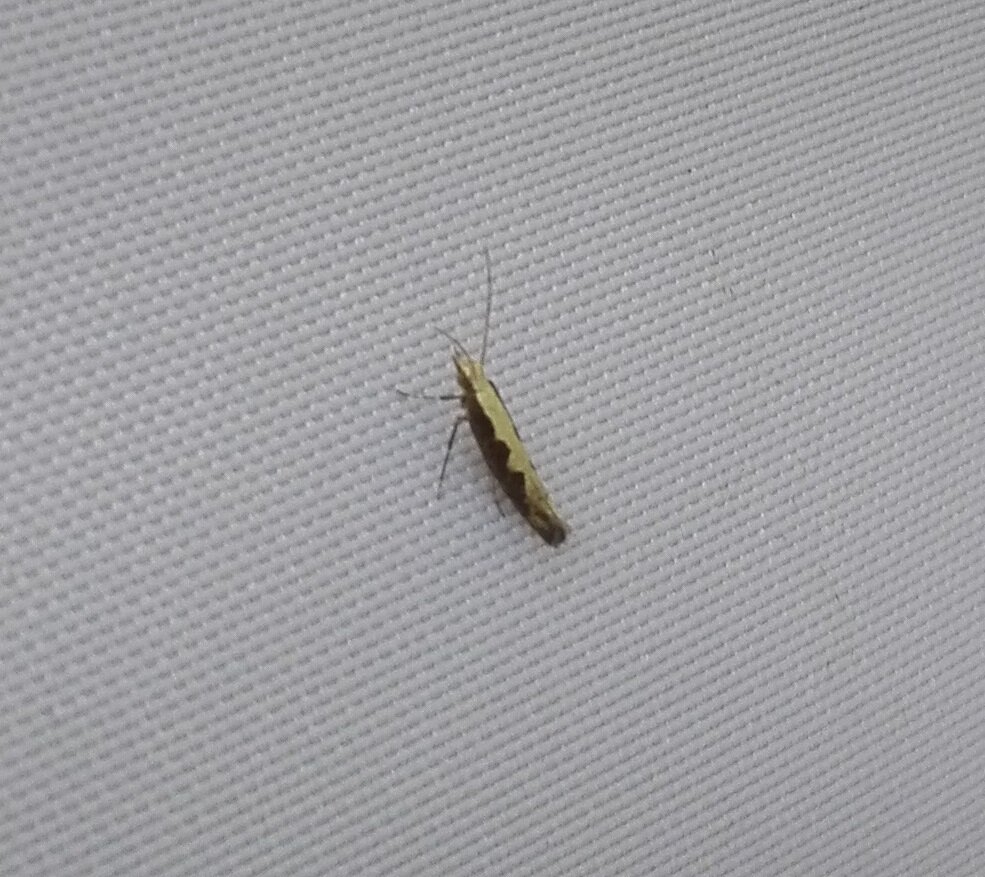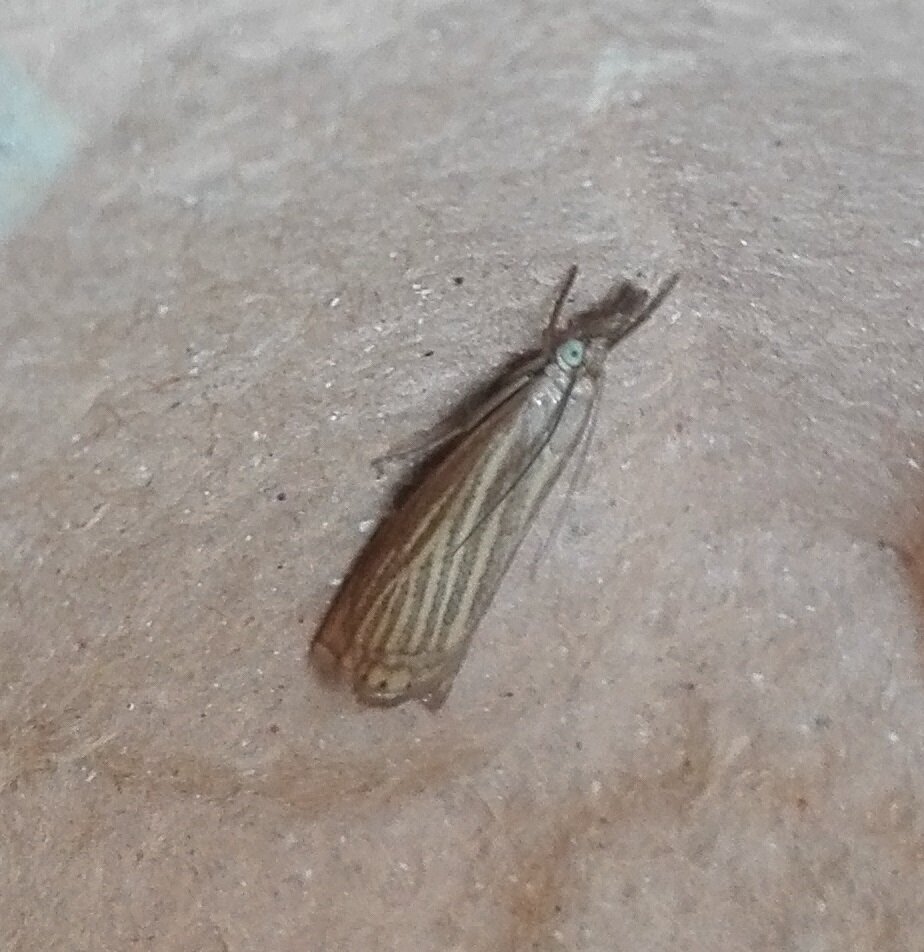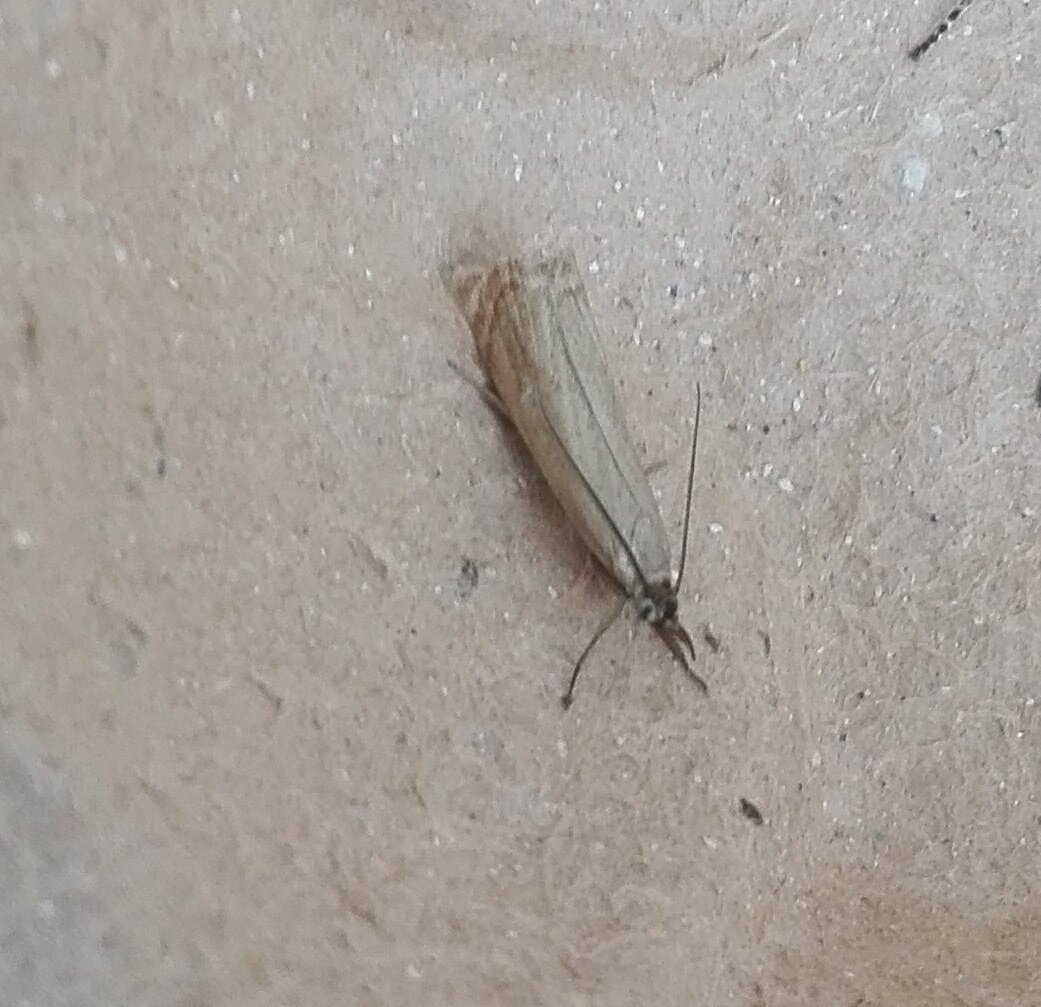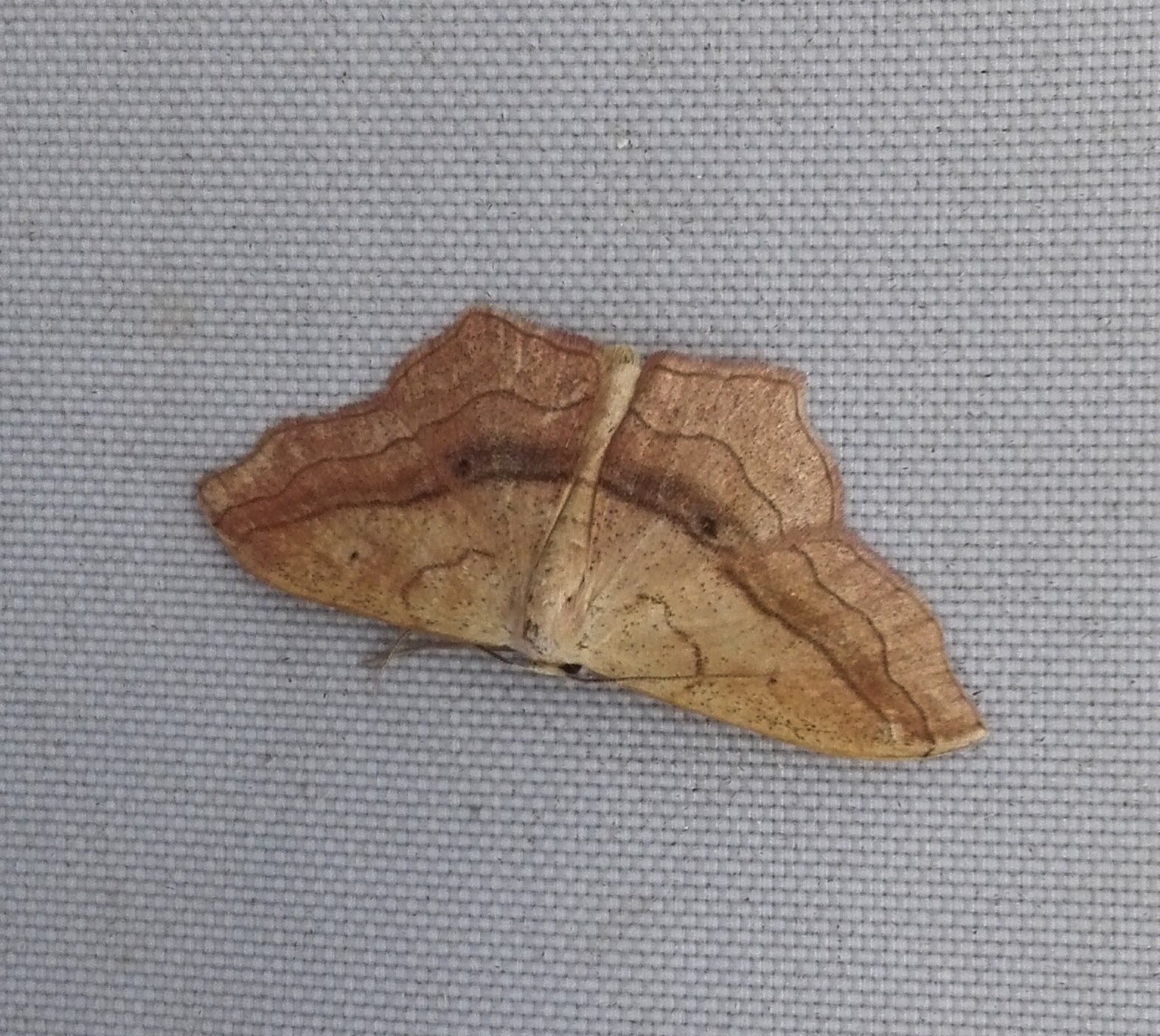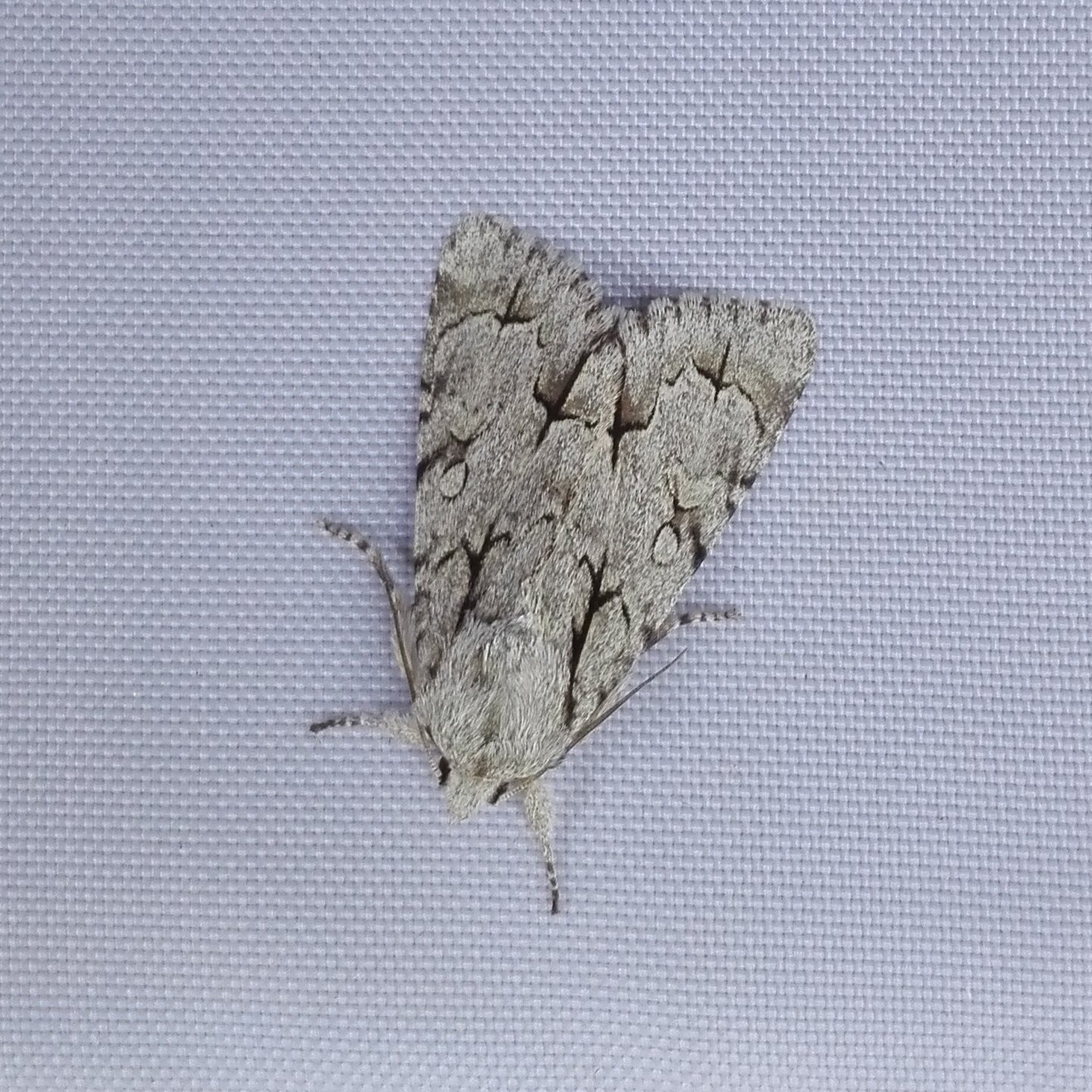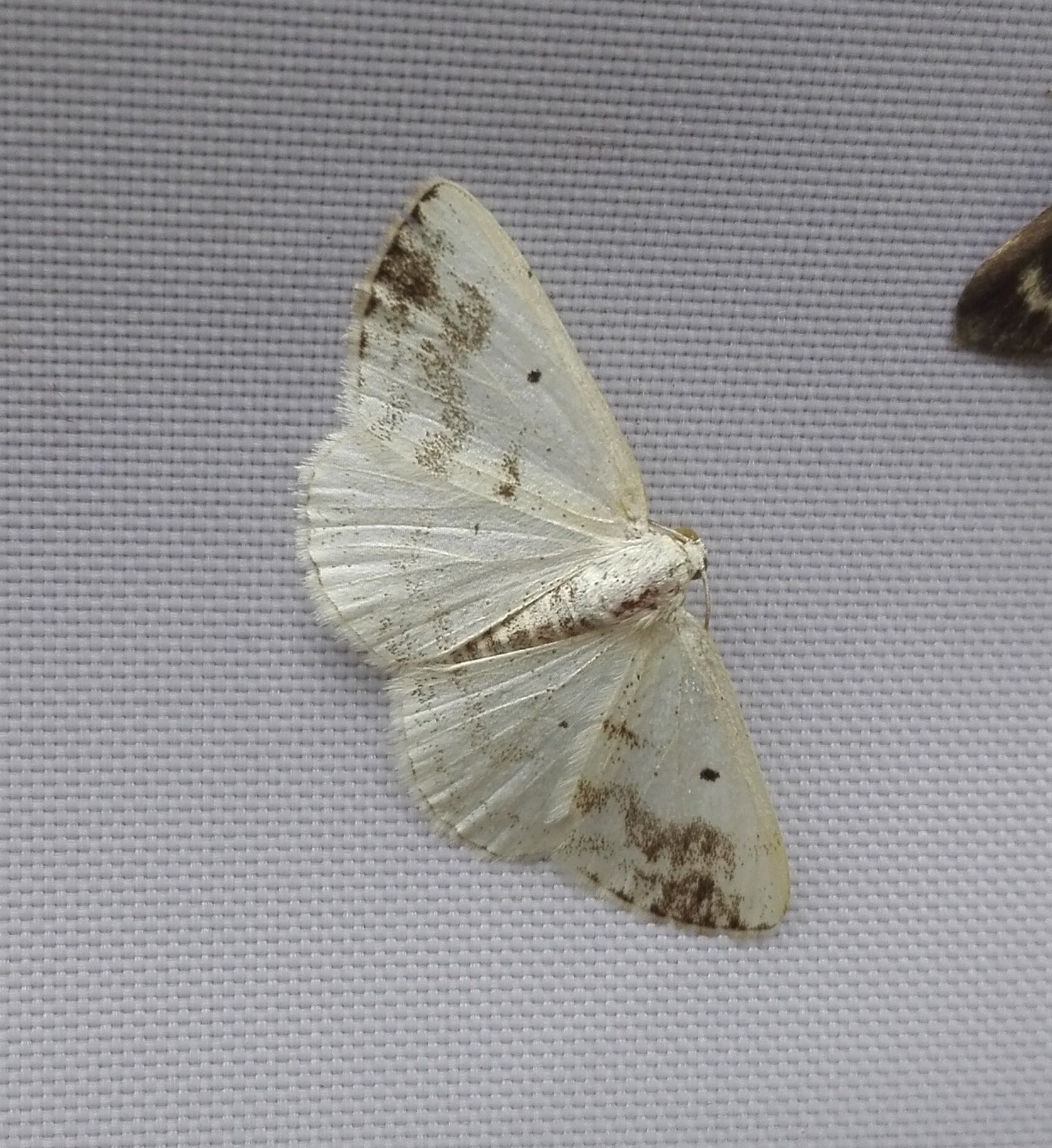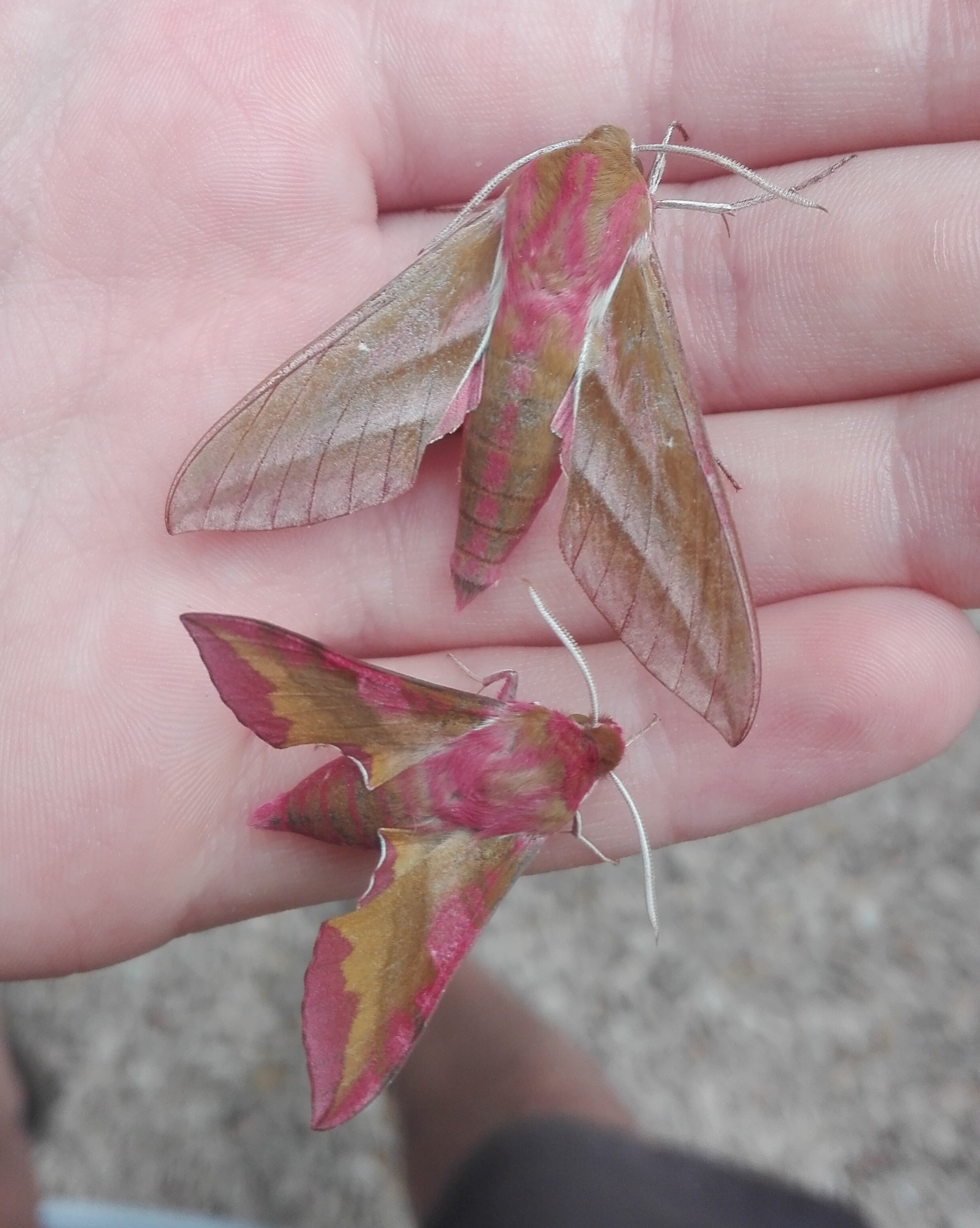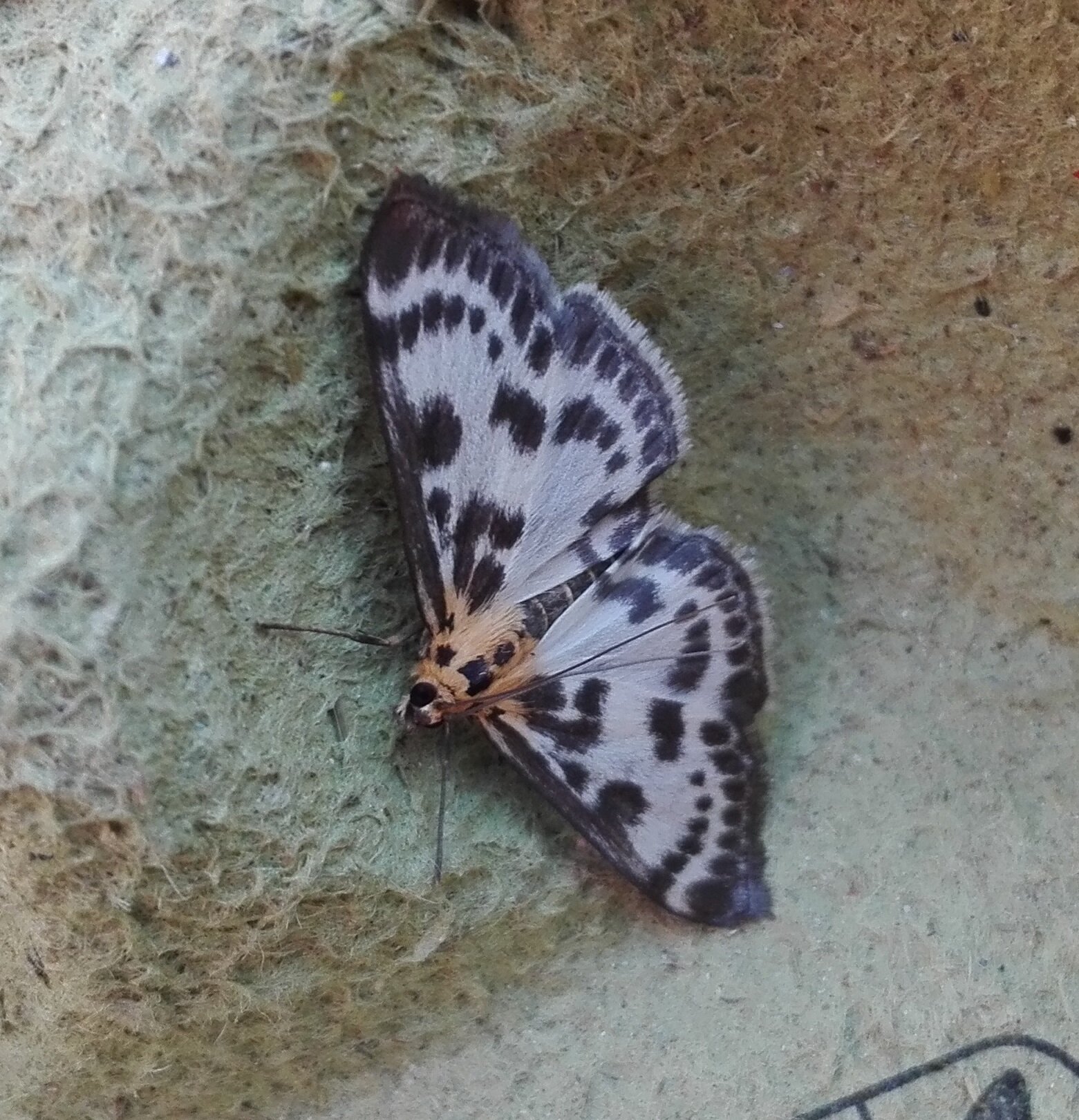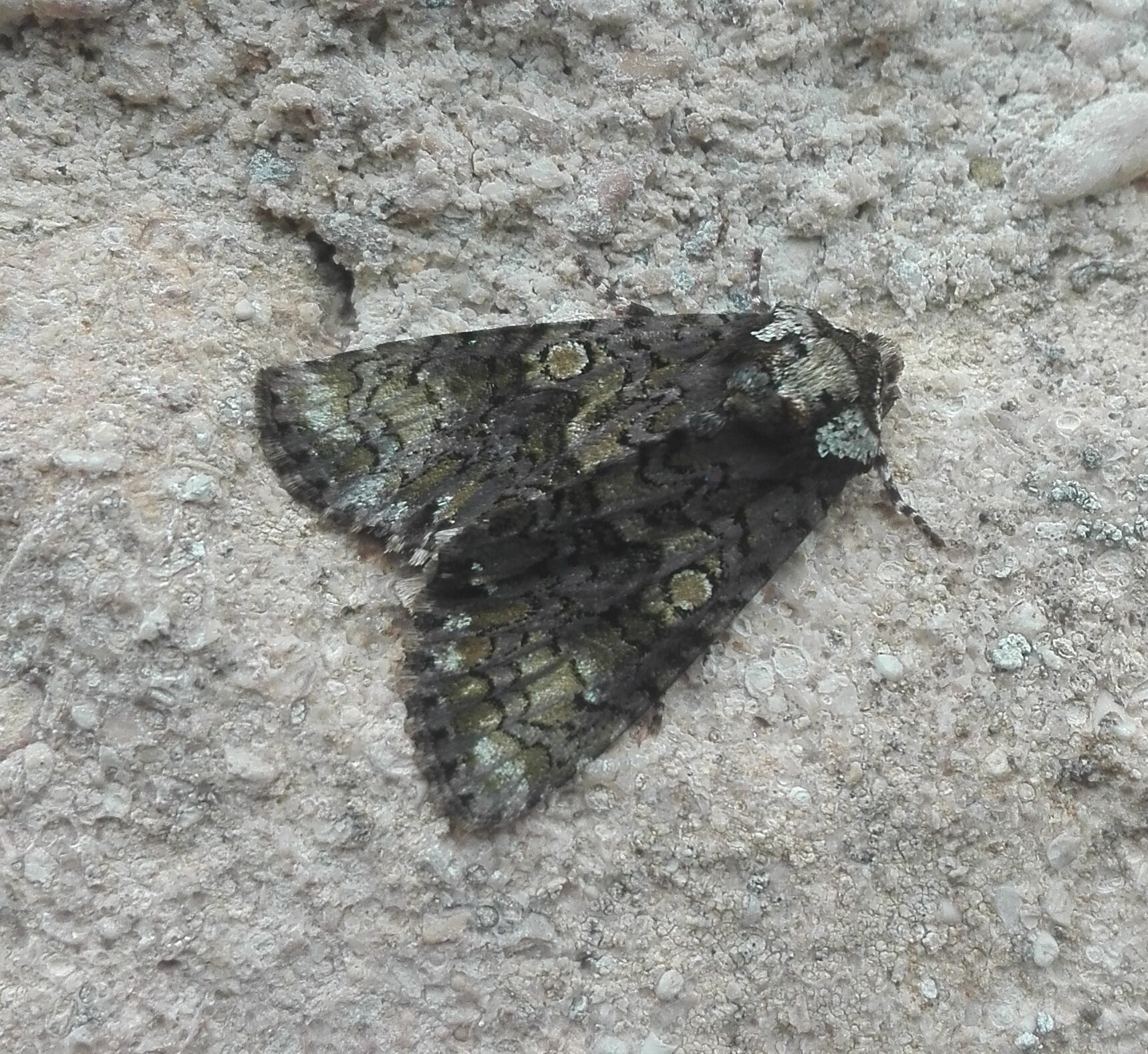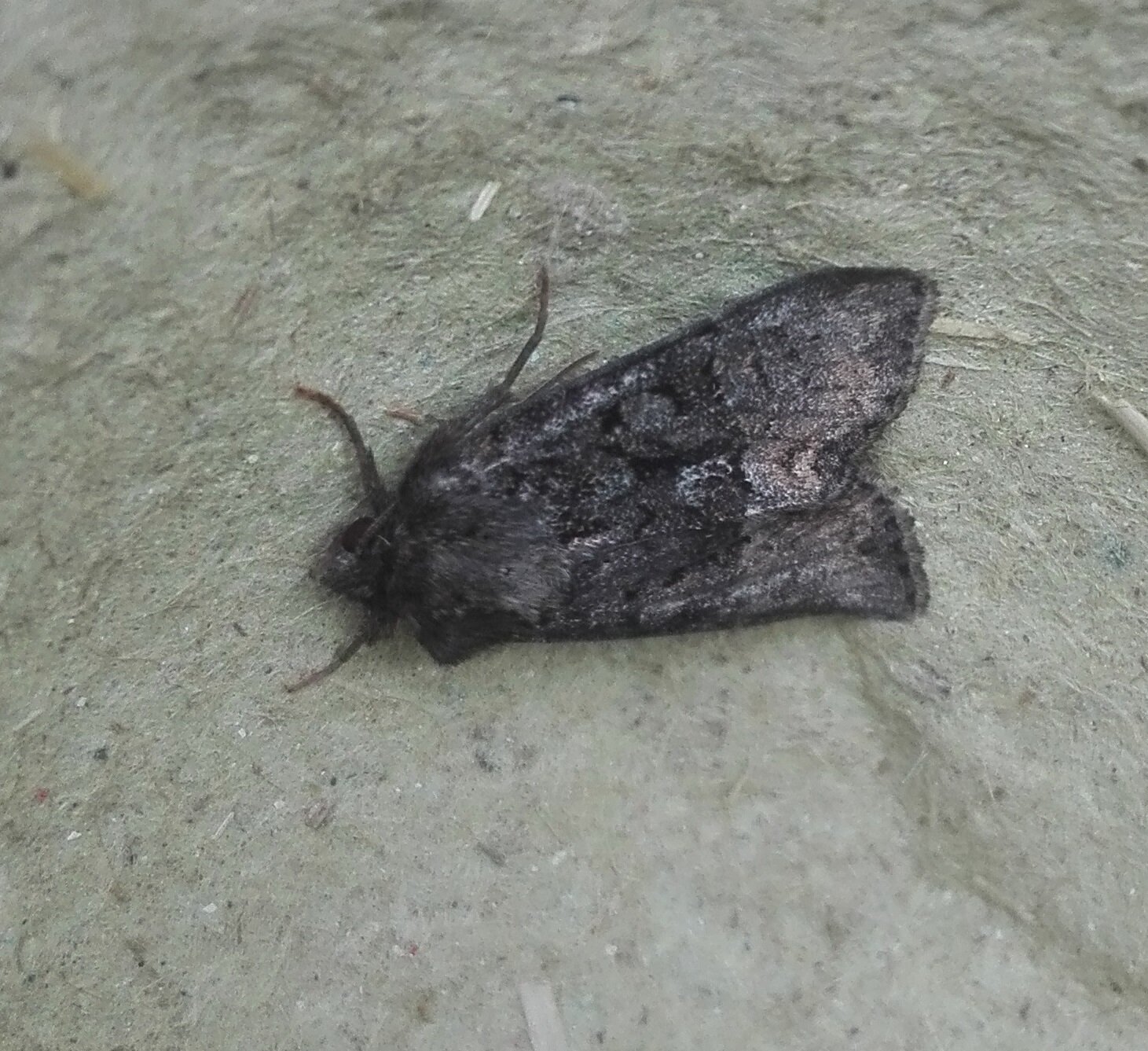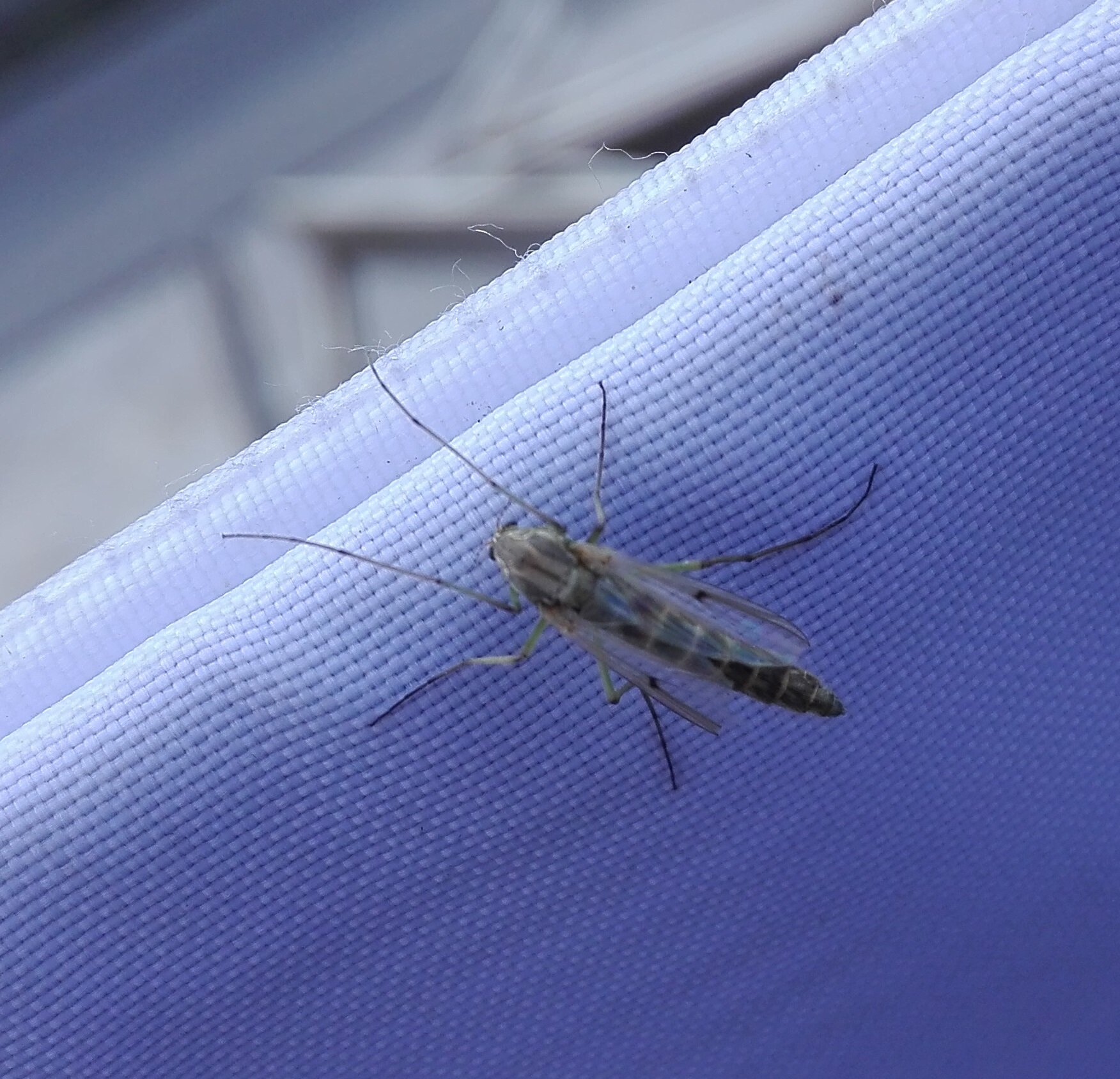It was dry and still, but a bit cold overnight, so there weren’t too many moths in the trap this morning, but nonetheless three new species; a pug and two micros - all quite small and not very colourful.
The pug is a Currant Pug (Eupithecia assimilata), whose larval food-plant is (unsurprisingly) currant bushes. The large dark spots at the front of the wings and pale spots towards the trailing edge identify this species, which has 2 generations during the summer. Garden Pebble (Evergestis forficalis) is also double-brooded, favouring gardens and allotments where its caterpillars can be a pest on cruciferous plants (eg. cabbages). Finally the False Cacao Moth (Ephestia woodiella) has several similar relatives, but most of them are more likely to be found in food warehouses or your kitchen cupboards in the dried fruit, nuts or flour, than in the wild. Flying mostly in May-July, it seems to be becoming more common.



